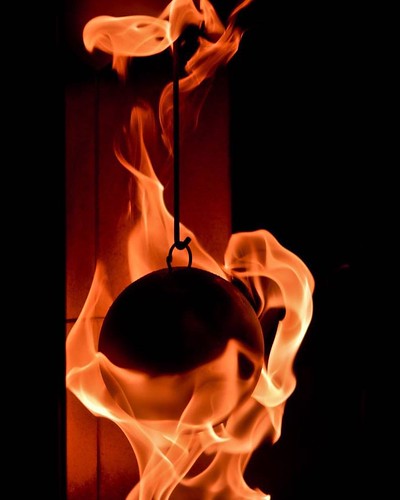the presence of blasticidin and G418. All the transformants were screened by PCR and further confirmed by RTPCR and Northern blot hybridization.Yeast two-hybrid interactions For bait constructs, protein coding regions of LimF were cloned in-frame with the DNA binding domain of pLexA. Yeast cultures were grown under standard conditions in liquid medium or on solid medium with minimal synthetic dropout medium. All yeast transformations were PubMed ID:http://www.ncbi.nlm.nih.gov/pubmed/19805400 carried out using standard TE/lithium acetate. In brief, the reporter strain EGY48/ p8op-lacZ was sequentially transformed with the bait plasmid as the pLexA-LimF fusion and a Dictyostelium cDNA library cloned into pB42AD. Transformants were screened for leucine auxotrophic marker and b-galactosidase. For characterization of individual positives, plasmids were isolated from yeast and transformed into E. coli KC8 cells and selected on M9 plates supplemented with ampicillin and thiamine. The plasmids were isolated from bacterial cells and were sequenced using the prey plasmid-specific primers. Domain-specific interactions were also tested. EGY48/p8op-lacZ yeast cells were simultaneously transformed with prey plasmids containing full-length ChLim or Rab21 or truncated versions of ChLim and with bait plasmids containing the different LIM domains of LimF. The selected transformants were tested on minimal plates lacking Leu in the presence of X-gal as above. All the constructs were verified by sequence and Western blot analyses. Protein purification and pull-down assays The full-length cDNA coding regions of LimF and ChLim were cloned downstream of the GST sequences in pGEX vectors. GST alone and both fusion proteins were expressed in E. coli strain  BL21 under the control of the tac promoter. For lysates, 5 107 Dictyostelium cells were incubated on ice for 30 min in 100 ml of lysis buffer. The lysate was cleared by centrifugation at 12 000 r.p.m. for 10 min at 41C. Gutathione-Sepharose beads complexed with 2030 mg of purified GST, GST-LimF, or GST-CH-LIM were incubated with 100 ml of lysate at 41C for 3 h. Beads were harvested by centrifugation and washed at 41C in lysis buffer. A 50 ml portion of 1 SDS gel loading buffer was added to the pelleted beads and the mixture was boiled for 10 min. Proteins were fractionated by NuPage 412% acrylamide gels and blotted onto nitrocellulose membranes. Membranes were blocked in TBS-T containing 5% nonfat milk and probed with a-GFP, a-Rab21, or a-HA antibody. Fluorescence microscopy The cells expressing GFP- and YFP-tagged fusion proteins were harvested in log phase, washed, and resuspended in PBS. Cells were plated on either chambered coverglasses or glass bottom dishes, allowed to settle for 15 min, and observed using the Axiovert 100M inverted microscope. In vivo phagocytosis, using TRITC-labeled yeast, was performed as described previously. For F-actin staining, cells were resuspended in PBS and layered on glass coverslips. After 15 min, PBS was replaced by 0.5 ml of fix solution. After 5 min, the fix solution was removed and replaced with 0.5 ml of 0.5% NP-40 in PBS to permeabilize the cells. After 5 min, detergent solution was removed and the coverslips were immediately washed three times in PBS. F-actin was stained with TRITC-phalloidin in PBS for 30 min in a covered humid chamber at room temperature. Fixed and live cells were observed using an inverted microscope equipped with a confocal laser AMI-1 system and an oil immersion 63/1.4 objective lens. An argon laser was
BL21 under the control of the tac promoter. For lysates, 5 107 Dictyostelium cells were incubated on ice for 30 min in 100 ml of lysis buffer. The lysate was cleared by centrifugation at 12 000 r.p.m. for 10 min at 41C. Gutathione-Sepharose beads complexed with 2030 mg of purified GST, GST-LimF, or GST-CH-LIM were incubated with 100 ml of lysate at 41C for 3 h. Beads were harvested by centrifugation and washed at 41C in lysis buffer. A 50 ml portion of 1 SDS gel loading buffer was added to the pelleted beads and the mixture was boiled for 10 min. Proteins were fractionated by NuPage 412% acrylamide gels and blotted onto nitrocellulose membranes. Membranes were blocked in TBS-T containing 5% nonfat milk and probed with a-GFP, a-Rab21, or a-HA antibody. Fluorescence microscopy The cells expressing GFP- and YFP-tagged fusion proteins were harvested in log phase, washed, and resuspended in PBS. Cells were plated on either chambered coverglasses or glass bottom dishes, allowed to settle for 15 min, and observed using the Axiovert 100M inverted microscope. In vivo phagocytosis, using TRITC-labeled yeast, was performed as described previously. For F-actin staining, cells were resuspended in PBS and layered on glass coverslips. After 15 min, PBS was replaced by 0.5 ml of fix solution. After 5 min, the fix solution was removed and replaced with 0.5 ml of 0.5% NP-40 in PBS to permeabilize the cells. After 5 min, detergent solution was removed and the coverslips were immediately washed three times in PBS. F-actin was stained with TRITC-phalloidin in PBS for 30 min in a covered humid chamber at room temperature. Fixed and live cells were observed using an inverted microscope equipped with a confocal laser AMI-1 system and an oil immersion 63/1.4 objective lens. An argon laser was
Posted inUncategorized
